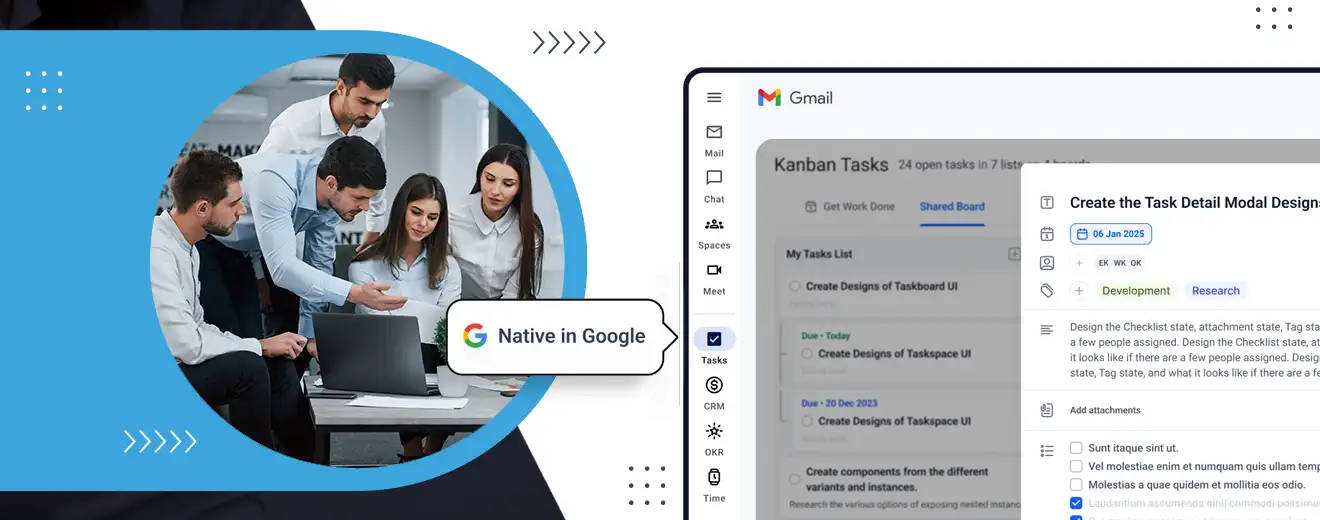OKRs are an effective collaborative goal-setting methodology and used by some of the world’s leading organisations to set and enact their strategies. In this article, we will explore the concept of OKRs, their history, and their benefits for your organisation.
The biggest testament to Google’s success is how it has become a verb. So it’s no surprise that Google is often seen as the benchmark when it comes to ways of working, and HR teams and managers are often analysing how Google achieved its annual performance targets.
One of Google’s ways of working is to use Objective and Key Results (OKRs), a management tool that supports setting goals and priorities, improving employee performance, and driving business growth.
What are Objectives and Key Results?

OKRs are a method for formulating and planning measurable goals for individuals, teams, or organisations. They help organisations set long-term goals on shorter timeframes, usually every three months. Objectives are the goals we want to achieve, while Key Results are the metrics to measure their achievement.
Distinctive features of OKRs
OKRs differ from conventional planning methods due to their measurability, flexibility, transparency, and aspirational nature. They promote a fast work rhythm, encouraging creativity and collaboration among team members.
Difference between KPIs and OKRs
Both KPIs and OKRs are productive measuring tools. However, KPIs measure overall health, while OKRs measure progress toward specific goals. We will discuss the differences between OKRs and KPIs in a future article.
History of OKRs and the pioneers
First used by Intel, OKRs eventually spread to other Silicon Valley companies, including Google. Since 1999, Google has employed this technique, which have been instrumental in guiding its growth from 40 employees to over 60,000. Other major companies that have adopted OKRs include Twitter, LinkedIn, Spotify, and Airbnb.
John Doerr, an Intel salesperson, learned about OKRs in 1975 through an internal corporate course taught by Andy Grove, the “Father of OKRs.” Grove’s approach was later documented in his 1983 book “High Output Management.” Doerr introduced the OKR concept to Google in 1999, and it became a core part of the company’s culture.
Key characteristics of OKRs
Iterative Goals: They use an iterative approach, with shorter goal design cycles (usually every three months) to adapt and innovate in response to changes.
Simplicity: They are simple and easy to understand, allowing companies to focus on achieving essential goals.
Transparency: They promote transparency and openness among employees at all levels, fostering collaboration and awareness of team members’ tasks.
Ambitious Goals: They challenge organisations to set ambitious goals that inspire and motivate employees to think harder about achieving them.
Related: Applying an agile mindset and ways of working to improve your Personal Agility
Main advantages of implementing OKRs in organisations
- Agile Culture: OKRs drive an Agile way of working, enabling faster adaptation and increased innovation.
- Cross-Divisional Harmony and Cooperation: OKRs foster collaboration between teams and divisions, working together to achieve common goals.
- Time-Efficient Goal Setting: The simplicity of the OKR method reduces the time and resources needed for goal setting.
- Clear Communication: They encourage transparency and simplicity, helping team members understand organisational goals and priorities.
- Employee Engagement: Involving employees in OKR settings promotes a sense of ownership and responsibility for achieving goals.
- Improved Focus and Discipline: Reducing the number of goals enables teams to concentrate on delivering what is needed.
A step-by-step guide to implementing OKRs
- Define your company’s objectives: The first step is to define the company’s overall objectives. These objectives should be high-level and align with the company’s mission and vision. For example, a company might set an objective to increase revenue by 20% in the next year.
- Break down objectives into measurable key results: Once you have defined your objectives, break them down into measurable key results. Key results should be specific and quantifiable, so you can track progress and determine if you have achieved your objective. For example, if the objective is to increase revenue by 20%, key results might include increasing the number of customers by 10% and increasing the average order value by 15%.
- Assign owners to each objective and key result: Assign owners to each objective and the key result. These owners will be responsible for achieving the objective or key results. They should be accountable for tracking progress, identifying obstacles, and driving the team toward success.
- Set individual OKRs: Once you have defined company objectives and key results, set individual OKRs for each team member. An individual OKR should align with company objectives and be relevant to each team member’s role. For example, a sales representative might set an individual OKR to increase their sales quota by 30%.
- Review and update OKRs regularly: This allows you to track progress, identify any obstacles, and make adjustments as needed. Regular reviews also help keep team members accountable and motivated toward achieving their goals.

- Celebrate successes: When an objective or key result is achieved, celebrate the success. Recognising and rewarding achievements can help motivate team members and reinforce the importance of OKRs.
- Learn from failures: Not every objective or the key result will be achieved. When this happens, take the opportunity to learn from failures. Identify what went wrong, adjust your approach, and use the experience to inform future OKRs.
By following these steps, you can effectively implement OKRs and drive performance and alignment within your organisation.
Related: Use POWER START For More Purposeful and Effective Meetings
Would you like to know more?
If you would like further help with your OKR strategy or how to implement them at your workplace you may contact us at info@ekipa.co.

.png)






